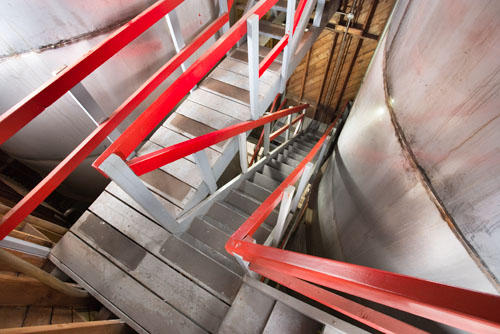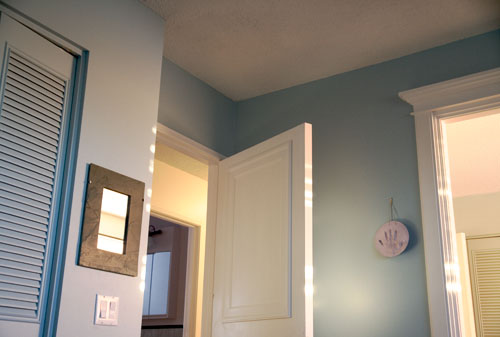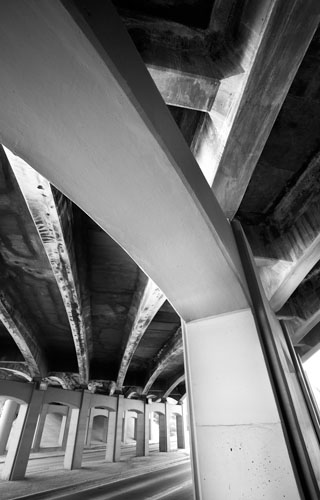
Unless you are using a full fisheye lens or a view camera with a wide lens designed for a smaller format so the entire circle of the image is contained within the film, you are going to have four corners to deal with. You can try ignoring them, but it makes more sense to use them. In that case, just what can you do with corners?
Lines leading into the corners: - they can go exactly to the corner, near the corner or if there is more than one line they can straddle the corner. Lines meeting in all four corners is a bit too much, but there might be times when it’s both possible and available.

Lines can run across corners - either straight or curved. A quarter boulder could sit in one corner, or a straight line could run from near the corner on one edge to near the corner on the edge beside it. This can be particularly effective if in the opposite corner there is a line leading right into the corner.
You can have lines that come near to the corner on both sides of the top edge, or bottom edge, or both. You can have lines offset from the corner in the same direction, clockwise or anti-clockwise in all four corners. You could have a line going to the upper left corner which touches the top edge near the top left corner, but the upper right edge in the upper right corner - not symmetrical but perhaps useful. What about having the lines going to the top two corners touching the top near the corners but the lines going to the bottom corners touching the sides.

Corners can be dark to act as a frame for the central subject, or bright white to act as balance to some other part of the image. There’s something tidy about things meeting in the corner.
Which strategy you pick will affect the overall mood of the image and control to some degree where the eye wanders in looking at a print. The old idea of providing a barrier to keep the eye from wandering out of the print is iffy, but having a line pointing to something important, from corner to main subject is very powerful and hard to ignore.
Wide angle lenses lend themselves to working with corners since natural perspective tends to create lines radiating from the centre of the image to the four corners. Objects with parallel approaching lines automatically do this.
Look at the images included here and note how the corners were treated. Decide for yourself whether it works for you as the viewer and how else you might have done the corners and predict what effect the alternative corner treatment might have produced.
Not every image is going to have important corners, especially portraits and landscapes, but some do. Corners are very important in industrial images and architecture. Go through some of your favourite books of photographs and look only at the corners.
Note that these days, it’s pretty easy to modify an image after the fact to force lines to meet in the corner, so you really do have to make a decision as to which is best. The worst you could do would be to simply ignore the corners all together or let lines fall where they may on the assumption that it doesn’t matter.

Image Descriptions

Drivers - 2006 This image shows varied corner treatments. In the upper left the spoke goes right to the corner and is balanced in the lower right by both a line cutting across the corner (the rod), and the ties coming out of the corner, all be it not radiating. In the lower left there is the dark space between spokes backeting the corner and in the upper right there is something reaching into the corner but with width so that its two edges bracket the corner. Note too the overall diagonal (low left to high right) of the drivers balanced in the upper left and lower right by lines going perpendicular to the bright metal.

Stairs - 2006 Here we have the two lower corners with lines running exactly into the corners, with the upper corners bracketed by the curved lines of the seams on the whiskey tanks.

Bedroom - 2004 In this image, only a single line goes into a corner, in the upper left. All three other corners are bracketed. Note the repeating trapezoid shapes anchored in the corner - the cubbord anchored in the bottom left corner, the doorway to the right bottom corner and the ceiling to the right upper corner. There’s only three of them in a four cornered image, but they seem to work well together.

Underpass - 2005 In the bottom, the lines come right into the corner but on the top they bracket the corners. I could have framed it differently so all four had lines into the corners, but I liked it this way. |